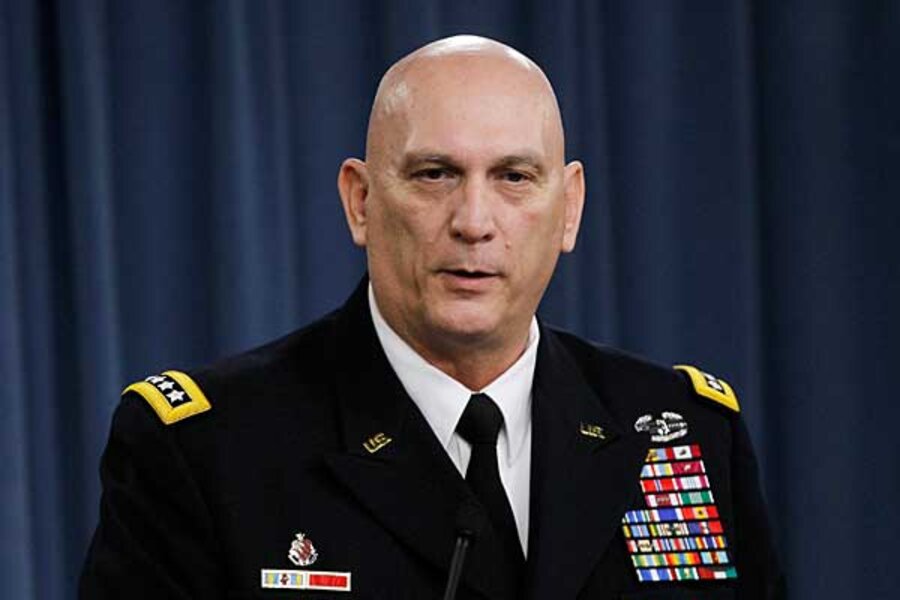How Pentagon budget cuts will reshape the Army
Loading...
| Washington
Military officials moved quickly Friday to counter the perception that the Army was the big loser in the new Pentagon budget unveiled Thursday.
The priorities laid out Thursday will have significant effects on the Army. For starters, the Army will be smaller, moving from approximately 570,000 soldiers today to 490,000 by 2017. Moreover, Army operations will involve more Special Operations Forces that will launch missions from small bases near hot-spots around the world.
The ranks of “cyberwarriors” to combat the threat of computer attacks on vital US infrastructure will also grow.
But now is the time to make such changes, Army officials say.
“The time is strategically right to reduce the Army’s force structure,” the Army’s top officer, Gen. Raymond Odierno, said Friday.
That's because the day-to-day job of soldiers will be changing dramatically in the years to come. US military officials promise that there will be no more wars that look like Iraq and Afghanistan – what are known in military parlance as “large-scale stability operations” – for quite some time,
“With the successful completion of our mission in Iraq, the continued transitions of operations to Afghan security forces, and the reduction of US presence in Afghanistan, our strategy calls for us to no longer plan for large-scale stability operations,” General Odierno said.
In addition, the bulk of US forces in Europe – specifically, two heavy combat brigades – will leave in the years to come. That’s a big change for a military with decades of ties to bases in Germany, Italy, and elsewhere in Europe.
The Army will maintain partnerships with its NATO allies, though in new ways, Odierno said. In the years ahead, the Army will instead rotate units through Europe more quickly, to train with NATO partners and other allies. This might include everything from small company-size units to large battalion-level exercises.
“In reality, I think, in the long run this will benefit all of us,” Odierno said. “It’ll cause more of our units to get involved in working with our NATO partners. It won’t just be limited to those stationed in Europe.”
Future missions may involve some stability, or peacekeeping, operations, but Odierno says they will likely be “on a much smaller scale.” Beyond that, he adds, “we’ll rely more on other partners to assist us as we do stability operations.”
Defense analysts point out that though the future US military interventions may indeed be smaller – think Libya, for example – they may not always be shorter.
In fact, they may be “prolonged,” says Stephanie Sanok, a senior fellow at the Center for Strategic and International Studies. This means the United States will need “friends and allies to do what we’re not going to do,” she adds. “And I don’t think those conversations have happened.”





